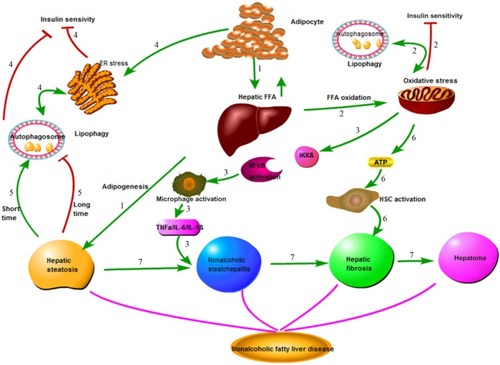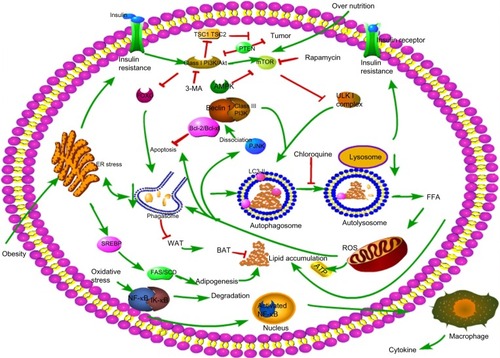Figures & data
Figure 1 Pathophysiology of nonalcoholic fatty liver disease (NAFLD).
Abbreviations: FFA, free fatty acid; ER, endoplasmic reticulum; HSC, hepatic stellate cells.

Figure 2 Electron micrograph showing ultrastructure of hepatocytes from a NAFLD mouse model.
Abbreviation: NAFLD, nonalcoholic fatty liver disease.

Figure 3 Molecular mechanisms involved in autophagy and NAFLD.
Abbreviations: NAFLD, nonalcoholic fatty liver disease; FFA, free fatty acid; ROS, reactive oxygen species; ER, endoplasmic reticulum; WAT, white adipose tissue; BAT, brown adipose tissue.

